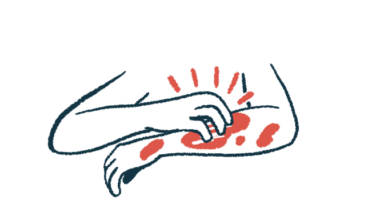Oral Dapsone Can Lead to Rapid, Sustained Improvement in Inherited EB, Case Report Shows

Oral treatment with dapsone, an antibiotic and anti-inflammatory, may be a valuable therapy for patients with inherited epidermolysis bullosa, according to a case report that showed the therapy resulted in rapid and sustained benefits in two men with the disorder.
The study, “Successful dapsone therapy in inherited Epidermolysis Bullosa,” was published in the Journal of the European Academy of Dermatology and Venereology.
Epidermolysis bullosa (EB) is characterized by blistering and extremely fragile skin. Current treatments focus on healing blisters, and preventing infection and further skin wounds.
Treatment with dapsone has been used to treat a range of dermatological conditions, including epidermolysis bullosa acquisita (which is not a genetic disease) and systemic lupus erythematosus.
“However, there are no published studies reporting on oral dapsone as a treatment for inherited EB and this warrants further investigation,” the researchers wrote.
A team from Australia described two cases of patients with inherited EB who were successfully treated with oral dapsone.
The first case was of a 31-year-old Caucasian man, referred to a rheumatologist in 2008 after three months of experiencing large itchy blisters, which were especially worse on the chest and abdomen. At first, the patient was misdiagnosed with bullous systemic lupus erythematosus and started on daily oral dapsone (100 mg), which led to a rapid reduction in the number and size of blisters.
As the patient had a family history of EB simplex (EBS), he was referred to the researchers’ dermatology service, and skin biopsies were consistent with a diagnosis of inherited EBS. Also, genetic analysis found mutations in the KRT5 and KRT14 genes, both key genes in the development of EBS.
The patient continued on dapsone therapy for a year. Although validated scales to assess EB disease severity were not available in 2008, he showed excellent improvement as documented by clinical photography.
The second case involved a 44-year-old Lebanese man with junctional EB, which was being managed with silicone foam dressings. The patient also developed end-stage kidney disease, secondary to EB, and was on hemodialysis.
He was admitted to the EB service in 2019 due to widespread itchy blisters and skin erosions. His results on the EB Disease Activity and Scarring Index (EBDASI) was high, with scores of 51 for activity and 58 for damage. In addition, his Quality of Life in EB (QOLEB) score was 14, which reflects moderate disease impact.
Following the benefits seen in the first patient, the second patient was started on oral dapsone (25 mg), taken twice per week. This dose was lower than in the first case due to the patient’s renal impairment.
Each dose was taken the day after dialysis to maximize effect. After two months, the dose was increased to 25 mg three times per week.
This course of treatment produced positive results, as the patient’s QOLEB score was lowered to 4 (very mild disease impact), and his EBDASI activity score decreased to 36 four months after starting on dapsone. After six months, his disease activity score decreased even further to 26 points, but the damage score, however, remained unchanged.
As of the study’s completion date, this patient had been on dapsone for 10 months, with no EB exacerbations or adverse events.
“In our two patients, use of oral dapsone led to rapid and sustained improvement. We believe this is a novel finding,” the investigators wrote.
“Dapsone may be a valuable and untapped adjunct therapy for patients with this devastating disease,” they added.






